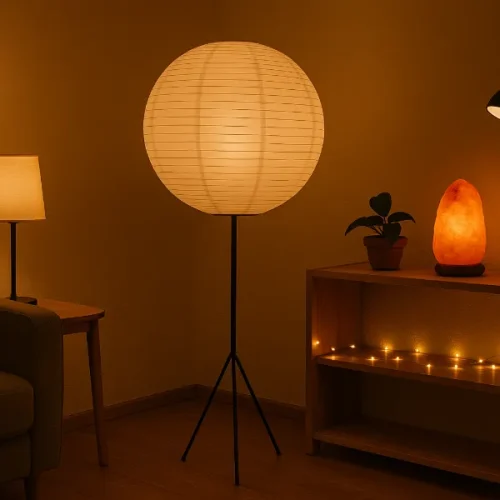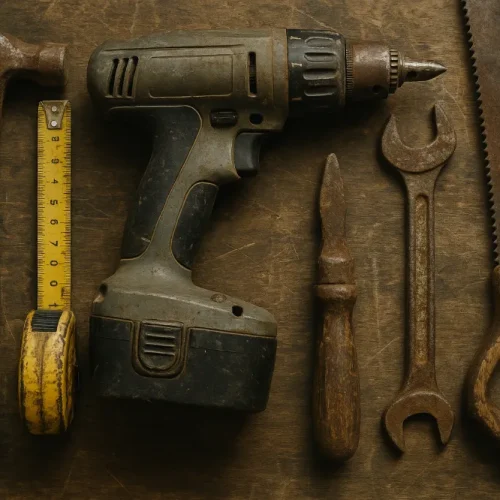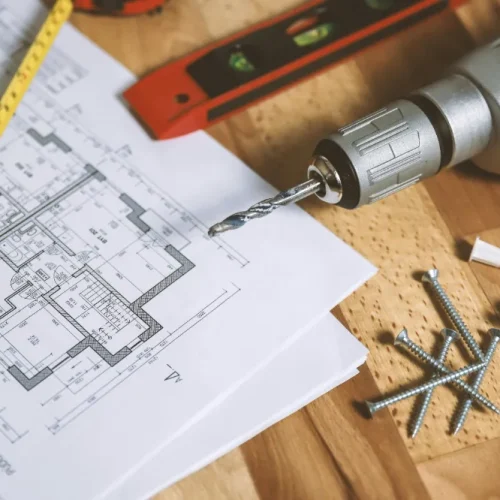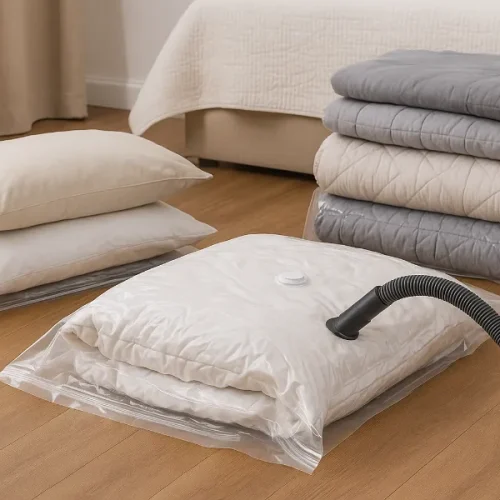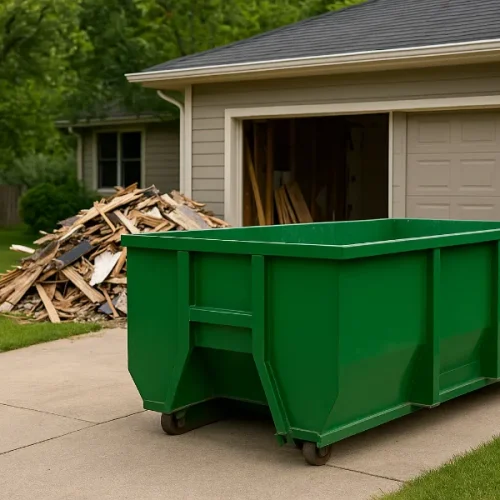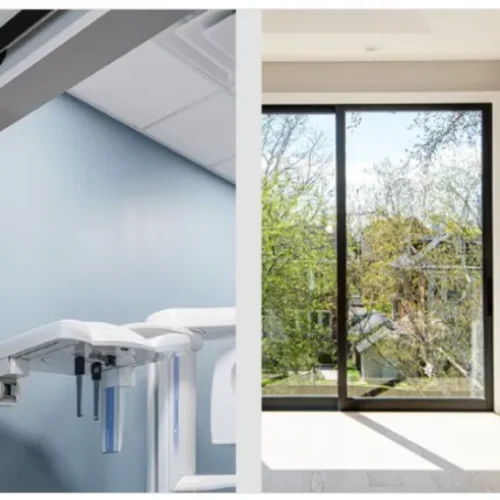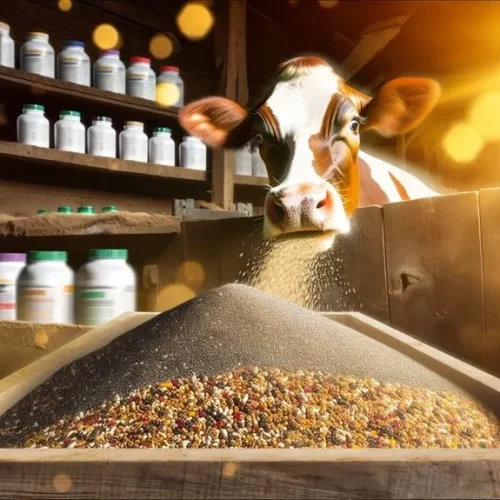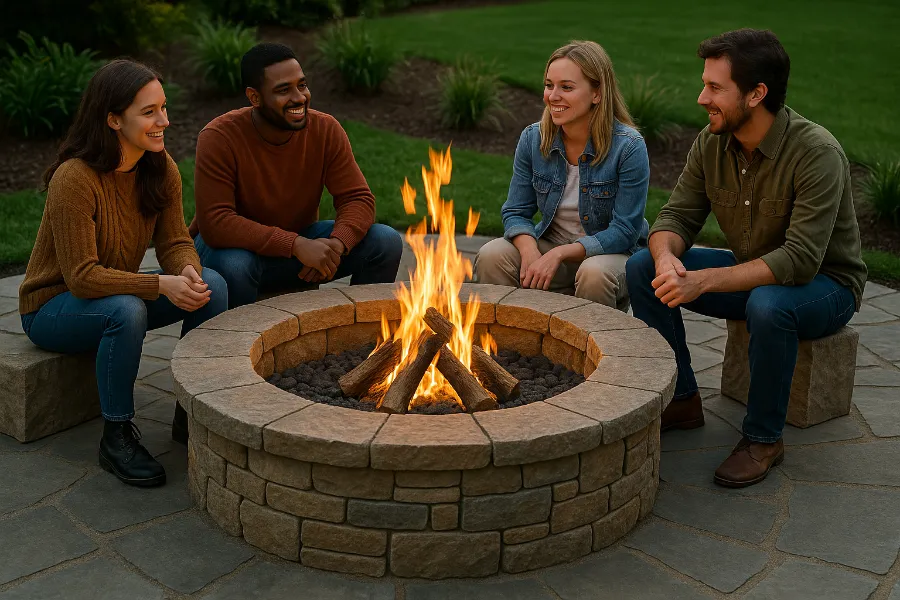
There’s something magical about sitting around a fire. The crackling flames. The warm glow. The laughter that lingers late into the night. But the real star of an outdoor fire pit isn’t just the fire—it’s the stones for fire pit that make it safe, stylish, and durable. Choosing the right stones can transform your backyard from a plain space into a warm, welcoming retreat. Whether you’re dreaming of rustic charm or sleek sophistication, the right stone makes all the difference.
In this guide, we’ll explore the best types of stones for fire pit designs, how to choose the perfect size, cost breakdowns, and even how fire pits compare with outdoor fireplaces. Let’s get started.
What Is the Best Stone for an Outdoor Fire Pit?
Not all stones are created equal. Some look great but can’t handle the heat. Others last forever but may not fit your style. When picking stones for fire pit projects, durability and heat resistance should always come first. Here are the top contenders:
Limestone
Limestone is a timeless favorite. Strong enough to handle fire and weather, it offers a clean, smooth surface that feels refined. Its heat absorption is moderate, which makes it comfortable for long evenings outdoors. Plus, it blends seamlessly into both traditional and modern landscapes.
Sandstone
If texture speaks to you, sandstone may be the winner. Its grainy finish creates natural patterns and adds depth to your fire pit’s look. Sandstone doesn’t overheat, radiating just enough warmth to keep gatherings cozy. It’s particularly stunning in natural or rustic settings.
Granite
When durability is non-negotiable, granite delivers. Nearly indestructible, it resists heat beautifully and comes in a wide range of colors. Granite fire pits not only last for decades but also offer a polished, elegant look. Just keep in mind that wet granite can be a little slippery.
Flagstone
Rustic and inviting, flagstone is one of the most popular stones for fire pit builds. Its uneven texture provides traction (great if you have kids running around), while its natural, earthy look blends well with gardens and patios. Maintenance can be higher since dirt and ash settle into its crevices, but many homeowners see this as part of its charm.
Bluestone
For a more sophisticated finish, bluestone is a top choice. With its slate-like texture, it balances elegance with durability. Bluestone also requires less maintenance than flagstone, making it appealing for homeowners who want beauty without extra upkeep. It is, however, pricier than most other options.
Lava Rock
Here’s where things get interesting. Lava rock isn’t used for building the walls of a fire pit—it’s used inside the pit. Lightweight and porous, it distributes heat evenly and stays warm long after the fire dies down. Plus, it’s one of the most affordable fire pit materials.
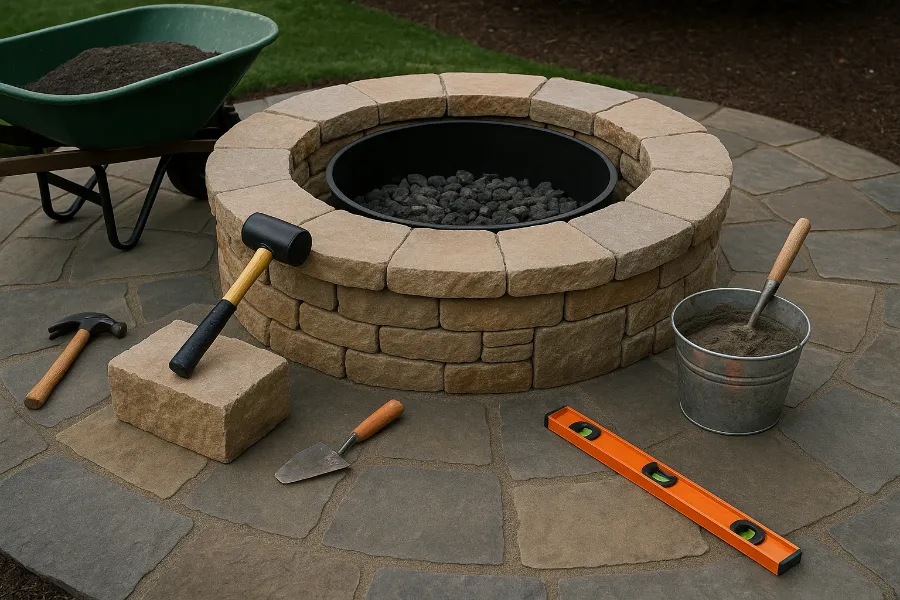
Stone Fire Pits: From Rustic to Refined
Once you’ve chosen your stones for fire pit, the next step is deciding on the style. Do you want a casual DIY build or a fully integrated centerpiece? Here are popular design approaches:
Simple Stacked Stone: Rustic Charm
For DIY enthusiasts, stacked stone is the go-to option. No mortar needed—just carefully stack fieldstone or flagstone. It gives a charming, rugged feel that looks like it’s been part of your yard forever.
Mortared Stone: Stability and Possibility
If you prefer durability, mortar holds stones in place and allows for more elaborate designs. Mortared fire pits can take on shapes beyond the standard circle and can even feature built-in seating.
Veneered Stone: Classic Made Easy
Want the stone look without the complexity? Veneered fire pits use a concrete core with a natural stone exterior. You get the aesthetics of real stone without the tricky construction.
Built-In Stone: Luxury and Seamless Design
Built-in fire pits become part of your patio itself. They blend into your hardscaping, creating a striking focal point. These are often custom projects that require professional installation, but the result is unmatched elegance.
Raised Stone Fire Pit
Want a statement piece? A raised fire pit adds drama while also improving heat distribution. The elevation makes it a natural centerpiece and encourages people to gather around.
Shape Matters: Round, Rectangular, or Custom
- Round fire pits: Classic, cozy, and perfect for social gatherings.
- Rectangular fire pits: Sleek and modern, often doubling as functional features like fire tables or with built-in storage.
- Custom shapes: For the adventurous, mix curves, unique layouts, or even hybrid designs that combine stone with other materials.
Fuel Options
Your choice of stone pairs with your choice of fuel:
- Wood-burning: Classic, aromatic, and rustic.
- Gas-powered: Convenient, clean, and adjustable.
- Fire pit tables: Functional, blending fire with a usable surface.
Finding the Perfect Fire Pit Size for Your Space
Bigger isn’t always better. When selecting stones for fire pit construction, consider size carefully.
Factors to Consider
- Available space: Leave room for seating and safe walking paths.
- Number of guests: Smaller pits work for 2–3 people, while larger pits accommodate 6–8 or more.
- Fire intensity: Larger pits = bigger fires.
- Functionality: Marshmallow roasting? Grill grates? Go larger.
Size Guide
- Small (24–32 inches): Best for patios and intimate settings.
- Medium (36–48 inches): The sweet spot for most backyards.
- Large (48+ inches): Great for spacious yards and big gatherings.
Height also matters—22–24 inches is standard. Taller fire pits improve heat spread but may limit legroom. Always check local fire codes before building.
How Much Does a Natural Stone Fire Pit Cost?
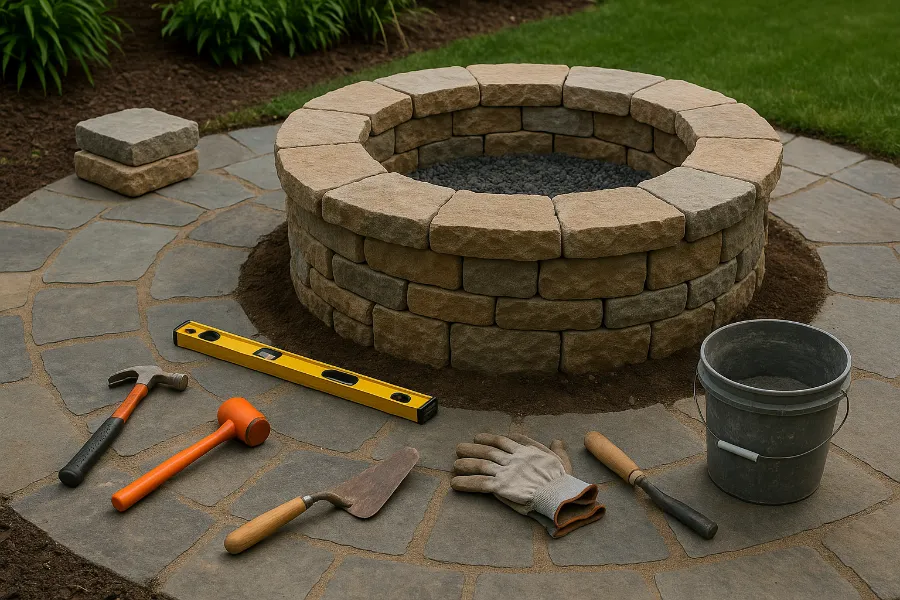
Cost is where things get real. Stones for fire pit projects vary widely in price depending on materials, design, and labor.
Price Ranges
- DIY stone fire pits: As low as $300 for simple builds.
- Custom stone fire pits: $1,500 to $5,000+.
Material Breakdown (per sq. ft.)
| Stone Material | Price Range | Pros | Cons |
|---|---|---|---|
| Limestone | $25–$50 | Strong, classic look | Can stain over time |
| Sandstone | $30–$55 | Textured, natural patterns | Softer, may chip |
| Granite | $40–$70 | Durable, heat-resistant | Heavy, pricey |
| Flagstone | $20–$40 | Rustic charm, grippy | Uneven, needs upkeep |
| Bluestone | $35–$60 | Elegant, low maintenance | Higher cost |
| Lava Rock | $10–$20 | Affordable, heat radiating | Not for walls |
Labor & Installation
Professional installation can double or triple the cost—but it ensures safety and longevity. Intricate stonework especially benefits from expert hands.
Fire Pit vs. Outdoor Fireplace: Which Is Right for You?
Both options create warmth and ambiance, but they serve different purposes.
- Fire pits: Encourage socializing in a circle, open to everyone. Best for casual gatherings and roasting marshmallows.
- Outdoor fireplaces: Create a focal point, more formal, and often paired with seating areas. Great for design-driven spaces but usually more expensive.
If community gathering is your goal, go with a fire pit. If you want elegance and structure, an outdoor fireplace may be the better investment.
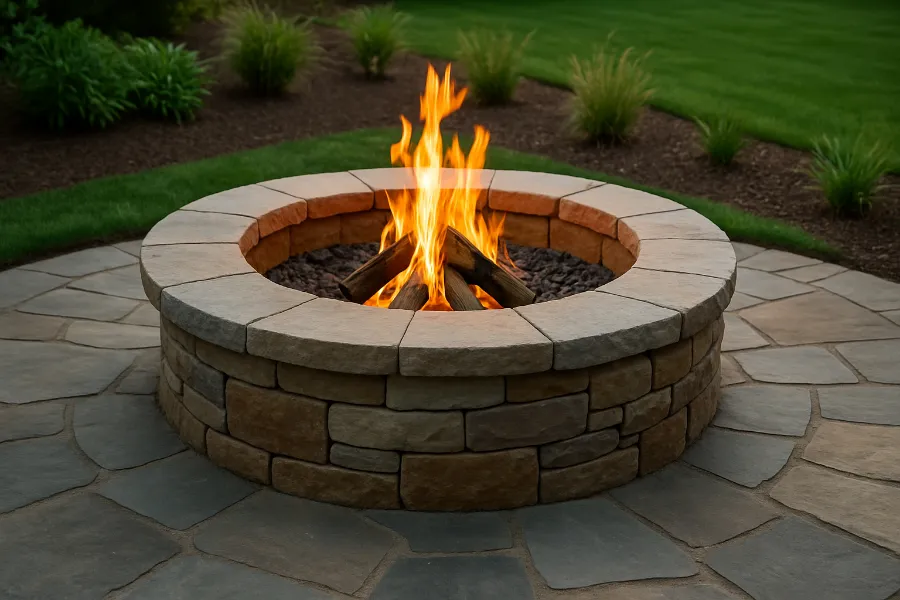
The Bottom Line
Choosing the right stones for fire pit is more than a design decision—it’s about safety, style, and longevity. Whether you lean toward the rugged charm of flagstone, the sleek look of bluestone, or the durability of granite, your fire pit can become the heart of your backyard. Pair the right stone with the right size, design, and fuel option, and you’ll create not just a fire pit but a destination—a place where memories are made.



